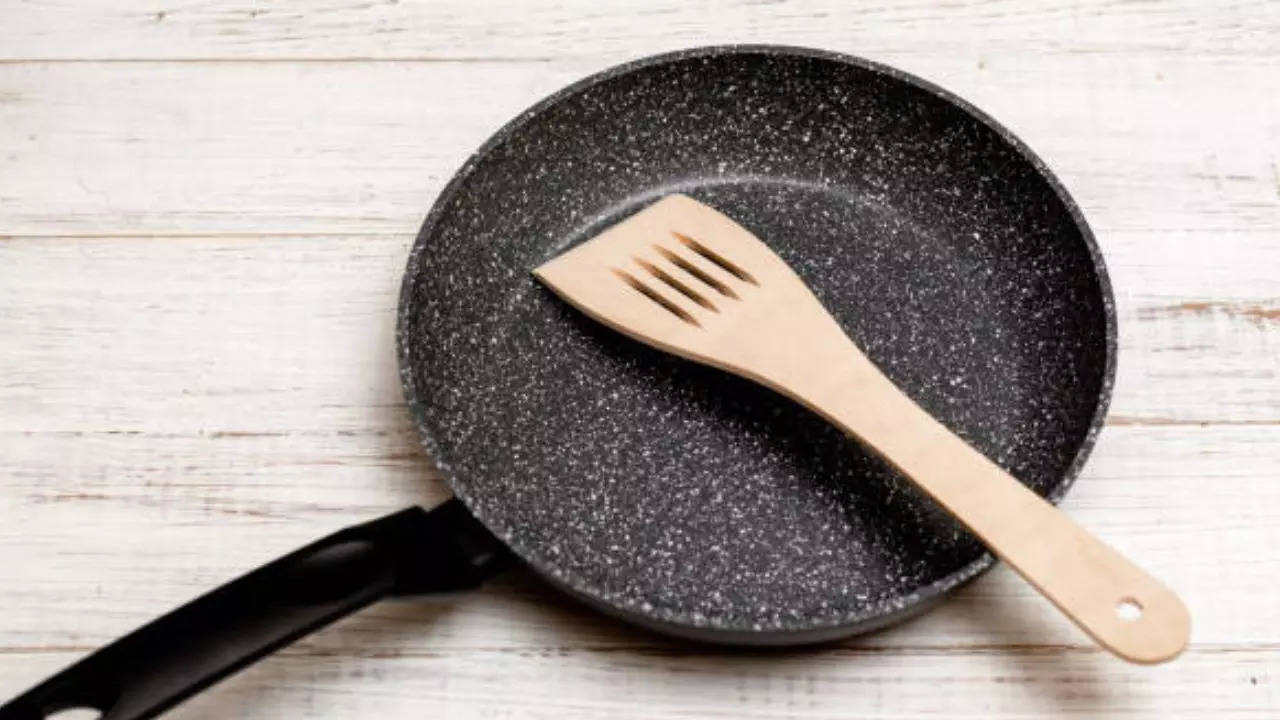Beware! Non-stick Cookware Is Not Always Safe To Use; Know What It Does To Your Health
Most people use non-stick cookware for their kitchens as it is super convenient, easy to use, and cooks fast. However, according to experts, if you exceed cooking temperature over 260°C, it can be dangerous for your health. Read on to know how.

There is a huge controversy among health experts around non-stick coatings like Teflon
Across the world people today use non-stick pots and pans for their everyday cooking. Companies that make this cookware claim that not only do they help minimize the usage of oil and fat, but also make food tastier, and healthier.
The nonstick coating is perfect for making eggs, and other delicate foods that might otherwise stick to the pan. However, there is a huge controversy among health experts around non-stick coatings like Teflon. Many claim that they are extremely harmful and linked to dreadful diseases like cancer.
What is non-stick cookware made with?
Your frying pans, saucepans, and cauldrons usually get coated with a material called polytetrafluoroethylene or PTFE - commonly known as Teflon. A synthetic chemical made of carbon and fluorine atoms, Teflon was first created in the 1930s, and since then has been providing a nonreactive, nonstick, and almost frictionless surface.
Even though it is easy to use and clean, Teflon has been flagged several times over concerns on perfluorooctanoic acid or PFOA – which was previously used to produce nonstick cookware, associated with overheating. According to experts, PFOA can lead to many health conditions, including thyroid disorders, chronic kidney disease, liver disease, and testicular cancer. It has also been linked to infertility in both men and women, along with low birth weight.
Doctors say many other ingredients in Teflon products also pose a health risk.
Why is overheating dangerous?
Many experts believe that Teflon coating is safe in cookware, however, if heated for a long time at temperatures above 500°F (260°C), Teflon coatings on nonstick cookware start to break down, releasing toxic chemicals into the air. Inhaling these fumes leads to polymer fume fever, also known as the Teflon flu.
This flu can cause symptoms like chills, fever, headache, and body aches. In the long run, however, serious side effects of exposure to overheated Teflon include lung damage.
How to minimize health risks while using non-stick cookware
To remove all doubts in your mind regarding the risks of Teflon in your non-stick cookware, you must note the following:- Never preheat an empty pan as they can reach high temperatures within minutes, causing the release of polymer fumes
- Do not cook on high heat, instead always make sure to use medium or low heat and avoid broiling
- Your kitchen should be well-ventilated and always turn on the exhaust fan to help clear fumes
- Wash your hands, pots, and pans with soap and warm water. Avoid using steel wools as they can lead to scratches on the surface
Teflon-free alternatives
A few other kinds of cookware that are completely safe and easy to use, include:
- Stainless steel as it is durable and scratch-resistant
- Cast iron is naturally non-stick and lasts for a long time
- Stoneware heats evenly and is non-stick when seasoned
- Ceramic cookware has excellent non-stick properties
- Silicone cookware can be used extensively for baking
Trending:
End of Article
Subscribe to our daily Lifestyle Newsletter!
Related News






Expert Shares How The Thyroid Gland Impacts Foetal Development

Brown Rice For Weight Loss; Know The Other Health Benefits Of This Whole Grain

What Is Congo Fever Pakistan has Reported? Know Signs And Symptoms Of The Highly-Fatal Viral Disease

Kourtney Kardashian Opens Up On Super Rare Fetal Surgery That Saved Her Baby

Optical Illusion Personality Test: What You See First Can Reveal If You Are Mature Or Childish








